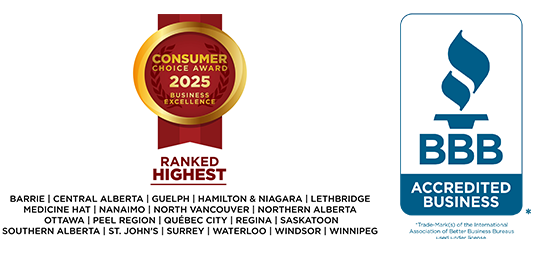Now we’re really indebted to you! Click the back button to view it in French — or visit our home page to learn more about how we can help you get back on track with your finances.
For more than 50 years, MNP has offered permanent debt recovery solutions such as Consumer Proposals and Bankruptcy to individuals facing an overwhelming amount of debt — helping them regain control of their finances. With more than 200 locations across Canada, our offices are strategically located from Victoria to St. John’s to serve your community best.
Call us today. A Licensed Insolvency Trustee is standing by to help you get a fresh start.


